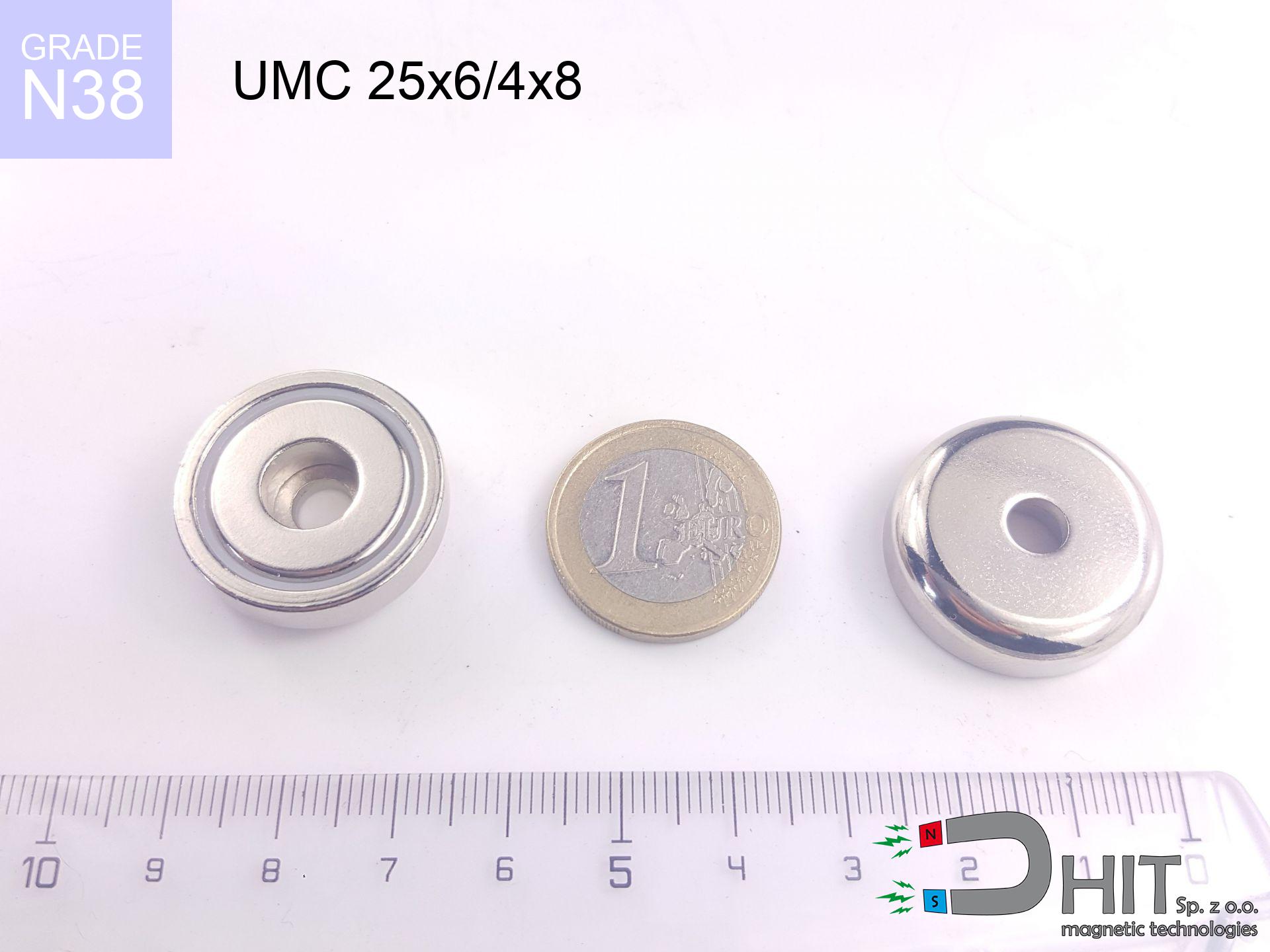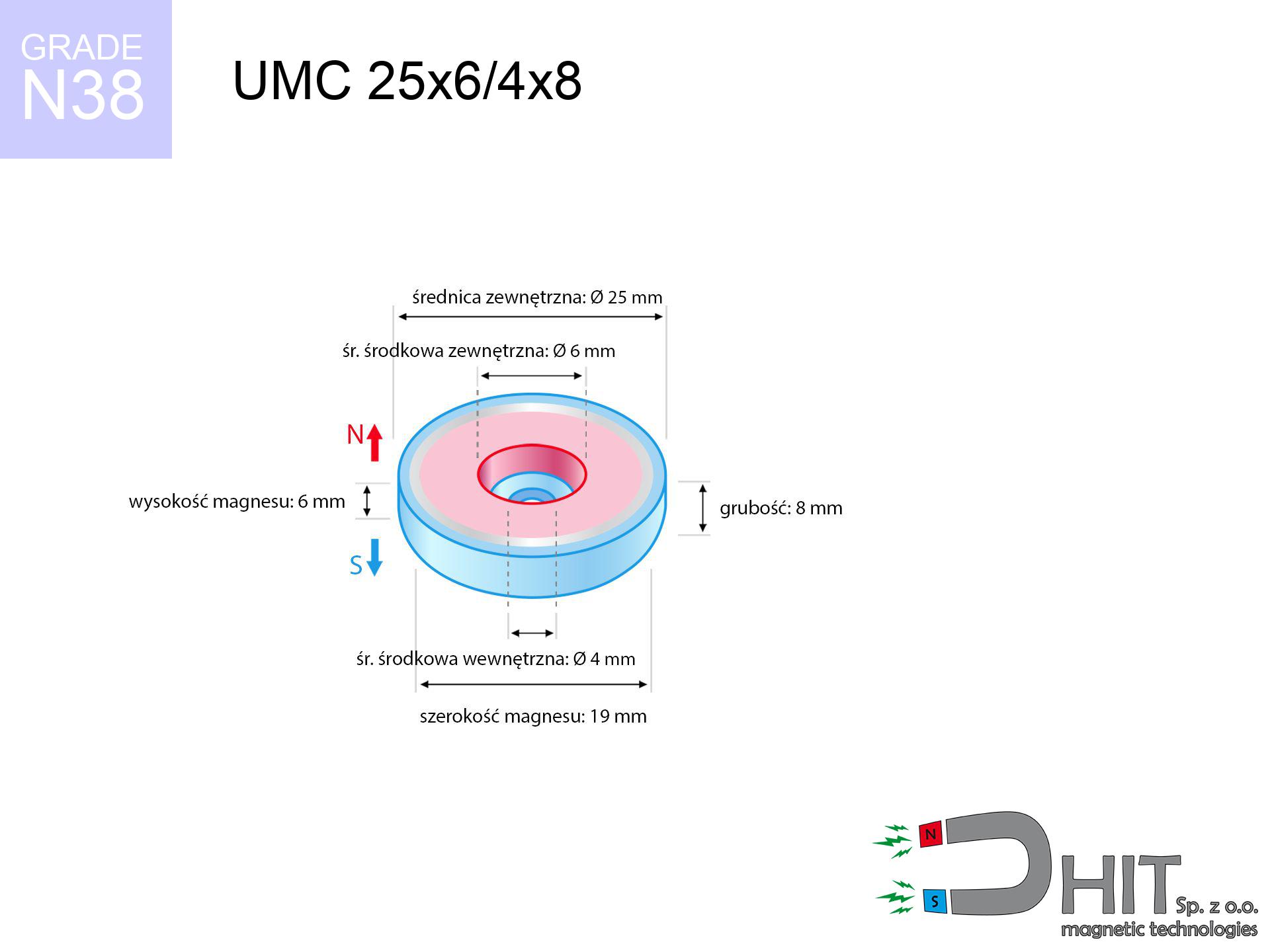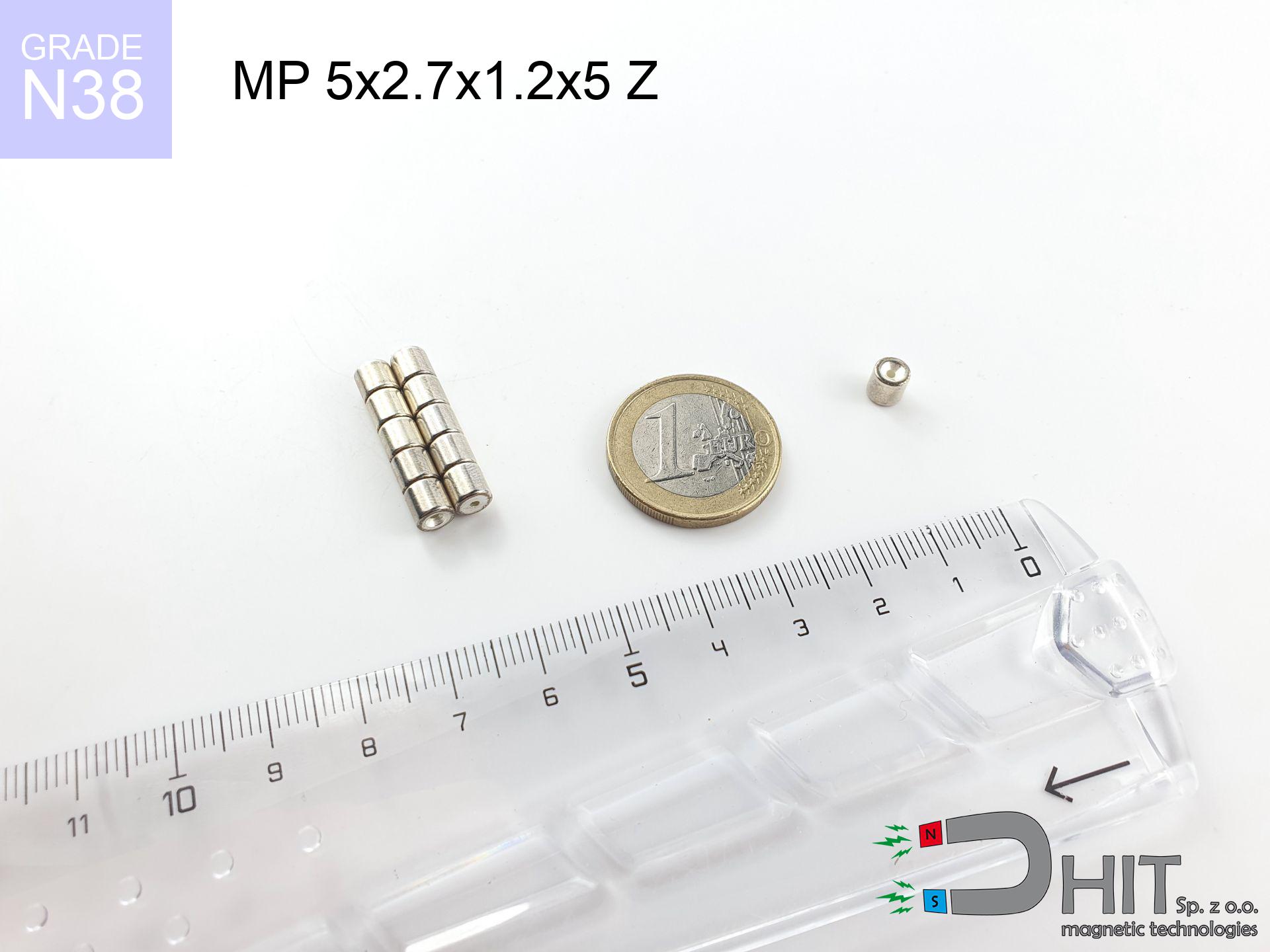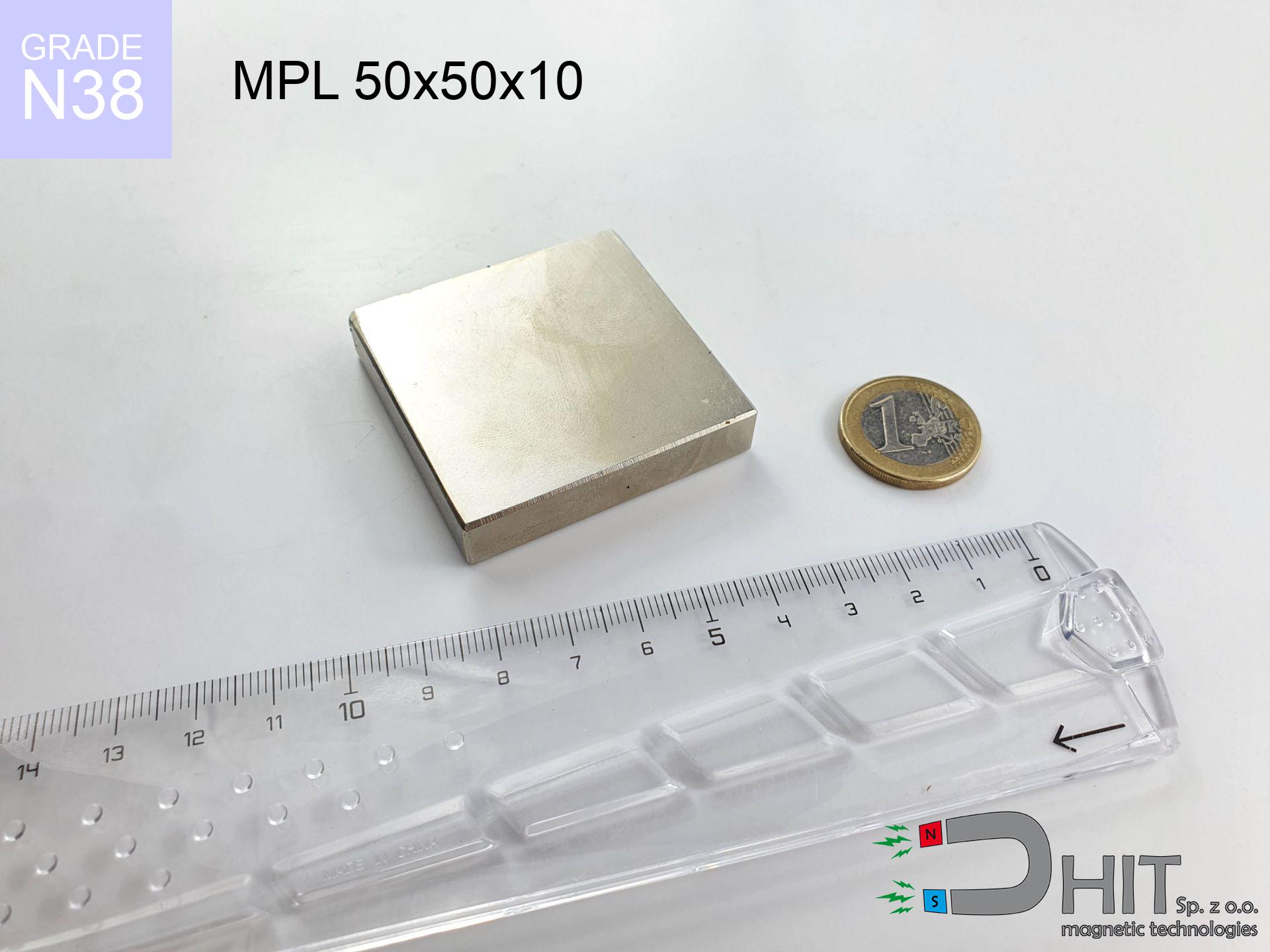UMC 25x6/4x8 / N38
cylindrical magnetic holder
catalog number 320408
GTIN: 5906301814641
external diameter Ø
25
mm [±0,1 mm]
internal diameter Ø
6/4
mm [±0,1 mm]
height
8
mm [±0,1 mm]
capacity ~
14.00 kg / 137.29 N
max. temperature
≤ 80
°C
catalog number 320408
GTIN: 5906301814641
external diameter Ø
25 mm [±0,1 mm]
internal diameter Ø
6/4 mm [±0,1 mm]
height
8 mm [±0,1 mm]
capacity ~
14.00 kg / 137.29 N
max. temperature
≤ 80 °C
11.70 ZŁ gross price (including VAT) / pcs +
9.51 ZŁ net price + 23% VAT / pcs
bulk discounts:
need more quantity?Want a better price?
Call us tel: +48 22 499 98 98 or contact us through form on our website. You can check the mass as well as the appearance of neodymium magnets in our power calculator magnetic calculator
Orders placed by 2:00 PM will be shipped on the same business day.
Specification: cylindrical magnetic holder 25x6/4x8 / N38
Magnetic properties of the material N38
Physical properties of sintered neodymium magnets Nd2Fe14B
Recommended articles for purchase
Advantages as well as disadvantages of neodymium magnets NdFeB.
Apart from immense strength, neodymium magnets have the following advantages:
- They do not lose their strength (of the magnet). After approximately 10 years, their strength decreases by only ~1% (theoretically),
- They protect against demagnetization caused by external magnetic field extremely well,
- In other words, thanks to the shiny coating of nickel, gold, or silver, the element acquires an aesthetic appearance,
- They have very high magnetic induction on the surface of the magnet,
- Thanks to their high temperature resistance, they can operate (depending on the form) even at temperatures up to 230°C and above...
- The ability for precise shaping or customization to specific needs – neodymium magnets can be produced in various forms and dimensions, which amplifies their universality in usage.
- Wide application in modern technologies – find application in HDD drives, electric motors, medical equipment or other highly developed apparatuses.
Disadvantages of neodymium magnets:
- They are prone to breaking as they are extremely fragile when subjected to a strong impact. If the magnets are exposed to impacts, it is suggested using magnets in a metal holder. The steel housing in the form of a holder protects the magnet from impacts and simultaneously increases its overall strength,
- They lose strength at high temperatures. Most neodymium magnets experience permanent loss of strength when heated above 80°C (depending on the form and height). However, we also offer special magnets with high temperature resistance, up to 230°C,
- Due to their susceptibility to corrosion in a humid environment, we recommend using waterproof magnets made of rubber, plastic, or other moisture-resistant materials when using them outdoors,
- The use of a cover - a magnetic holder is recommended due to the limited production capabilities of creating threads or complex shapes in the magnet
- Health risk arising from small pieces of magnets pose a threat, if swallowed, which becomes significant in the aspect of protecting young children. It's also worth noting that tiny parts of these devices have the potential to complicate diagnosis in case of swallowing.
Exercise Caution with Neodymium Magnets
Neodymium magnets are the most powerful magnets ever created, and their power can shock you.
Familiarize yourself with our information to properly handle these magnets and avoid significant swellings to your body and prevent disruption to the magnets.
Do not give neodymium magnets to children.
Neodymium magnets are not toys. Be cautious and make sure no child plays with them. They can be a significant choking hazard. If multiple magnets are swallowed, they can attract to each other through the intestinal walls, causing severe injuries, and even death.
Neodymium magnets are primarily characterized by their significant internal force. They attract to each other, and any object that comes in their way will be affected.
Neodymium magnets will bounce and also touch together within a radius of several to almost 10 cm from each other.
Neodymium magnets can demagnetize at high temperatures.
Even though magnets have been found to maintain their efficacy up to temperatures of 80°C or 175°F, it's essential to consider that this threshold may fluctuate depending on the magnet's type, configuration, and intended usage.
Under no circumstances should neodymium magnets be brought close to GPS and smartphones.
Neodymium magnets are a source of intense magnetic fields that cause interference with magnetometers and compasses used in navigation, as well as internal compasses of smartphones and GPS devices.
Dust and powder from neodymium magnets are flammable.
Avoid drilling or mechanical processing of neodymium magnets. If the magnet is crushed into fine powder or dust, it becomes highly flammable.
Do not place neodymium magnets near a computer HDD, TV, and wallet.
Strong magnetic fields emitted by neodymium magnets can damage magnetic storage media such as floppy disks, credit cards, magnetic ID cards, cassette tapes, video tapes, or other devices. In addition, they can damage televisions, VCRs, computer monitors, and CRT displays. You should especially avoid placing neodymium magnets near electronic devices.
Keep neodymium magnets away from people with pacemakers.
In the case of neodymium magnets, there is a strong magnetic field. As a result, it interferes with the operation of a heart pacemaker. However, if the magnetic field does not affect the device, it can damage its components or deactivate the device when it is in a magnetic field.
Neodymium magnetic are extremely fragile, they easily break as well as can become damaged.
Neodymium magnets are extremely delicate, and by joining them in an uncontrolled manner, they will crack. Neodymium magnetic are made of metal and coated with a shiny nickel, but they are not as durable as steel. At the moment of collision between the magnets, sharp metal fragments can be dispersed in different directions.
Avoid contact with neodymium magnets if you have a nickel allergy.
Studies clearly indicate a small percentage of people who suffer from metal allergies such as nickel. An allergic reaction often manifests as skin redness and rash. If you have a nickel allergy, you can try wearing gloves or simply avoid direct contact with nickel-plated neodymium magnets.
Please see the article - What danger lies in neodymium magnets? You will learn how to handle them properly.





![magnetic beam 950x180x70 [4x M8] magnetic beam 950x180x70 [4x M8]](https://cdn3.dhit.pl/graphics/products/bm-950x180x70-4x-m8-ves.jpg)


